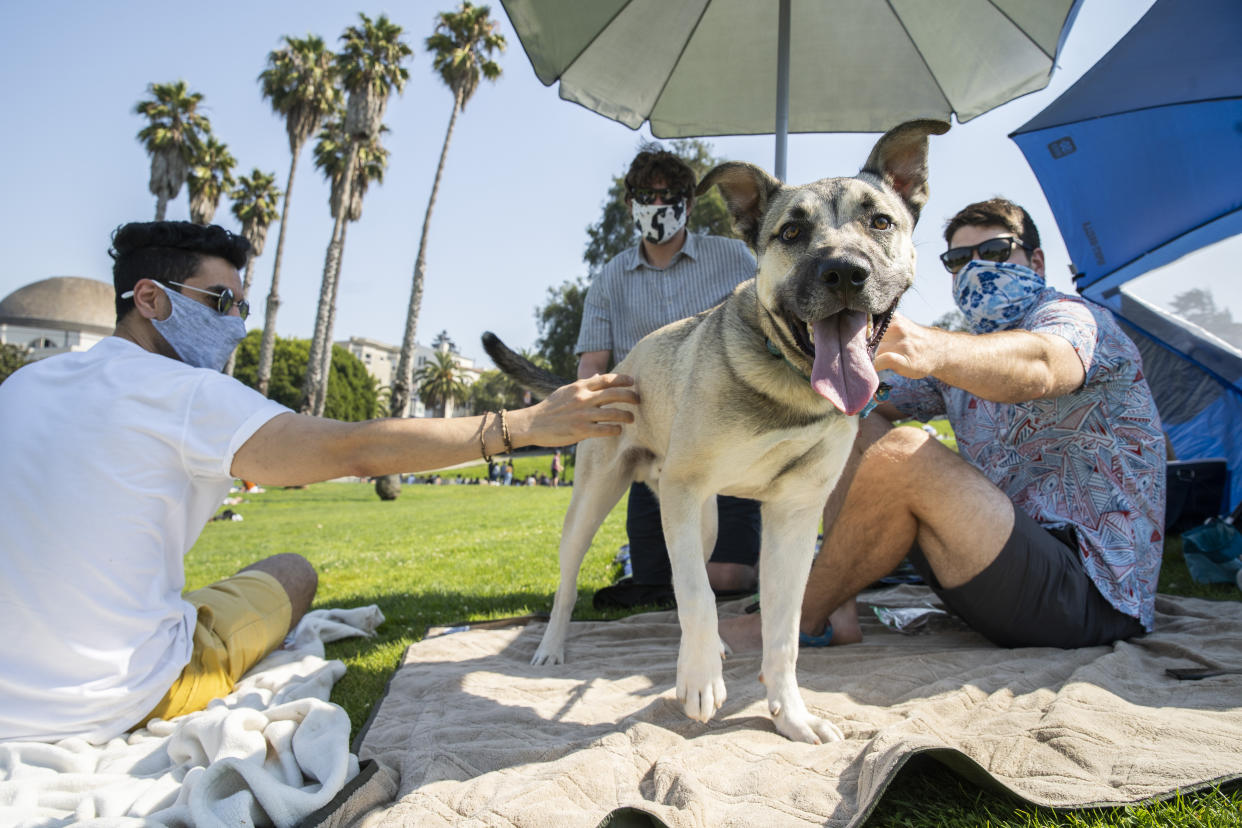COVID-19 may not be seasonal like the flu, study finds: 'Transmission has not slowed down during warm months'

While previous studies have predicted that the coronavirus will eventually become seasonal like the flu, new research suggests that the virus may stick around all year.
Respiratory viruses are often seasonal, and some, including influenza A and B, typically prefer the dry, cold conditions common in the winter. But the new study, published in the journal Nature, suggests that sustained transmission of the coronavirus “can still happen in warm and humid places, as seen in the U.S. during the past summer months,” one of the study’s authors, Mauricio Santillana, an assistant professor in the department of epidemiology at the Harvard T.H. Chan School of Public Health, tells Yahoo Life.
The study authors say their findings suggest that “changes in weather (i.e., increase of temperature and humidity as spring and summer months arrive in the Northern Hemisphere) will not necessarily lead to declines in case counts without the implementation of drastic public health interventions.”
Santillana points to a recent study that found “higher temperatures may have led to higher [COVID-19] transmission in 122 cities in China, concluding that there was no evidence supporting the hypothesis that case counts of COVID-19 would decline when temperatures increase,” he says.
However, Santillana says this does not “negate the possibility that temperature and humidity could play a modulating role on COVID-19 transmission as they do in influenza transmission.” He explains that early in the pandemic, “susceptibility to the SARS-CoV-2 coronavirus was very high and thus transmission was explosive,” making it difficult to identify the effect of environmental factors (such as weather) on transmission rates.
But “as more people become infected — and hopefully immune to COVID-19 — we may see a more pronounced effect of temperature and humidity on transmission, and over time it may become a more seasonal disease,” says Santillana.
Dr. Iahn Gonsenhauser, chief quality and patient safety officer at the Ohio State University Wexner Medical Center, isn’t surprised by the latest findings. “Since we became aware of COVID and its potential global impact, there has been speculation regarding the pattern and duration of its spread,” Gonsenhauser tells Yahoo Life. “While there has been speculation that COVID-19 would exhibit seasonality, there has been little supporting evidence of that speculation. If anything, data like that which was presented in this study in Nature and quite a few others suggest that this is inaccurate. Ultimately, it is simply too early to make any valid conclusion regarding COVID-19 seasonality.”
Scientists also don’t yet know if the coronavirus will eventually become less severe. Although it is slowly mutating, there is “little evidence to support speculating that the virus will weaken over time,” says Gonsenhauser. “We have anecdotal evidence that the virus has been more severe on reinfection, but these accounts are extremely limited. We also have no evidence to suggest how individuals who have received a vaccine will respond. For example, the influenza vaccine consistently, significantly decreases the severity of influenza for those who have been vaccinated but still contract the virus.”
Related video: Everything you need to know about the flu shot
He adds: “As more of the population either experiences infection with COVID or is simply exposed without becoming infected, we may see severity of individual cases lessen. But this is pure speculation and is not supported by comparisons to influenza, nor is it supported by scientific evidence at this time.”
However, Santillana says that doctors have “definitely gotten better at treating patients affected by COVID-19,” and as a result, “less people may die due to this disease in the future.”
So if more evidence shows that COVID-19 isn’t seasonal, what effect would that have on people year-round? Gonsenhauser says that’s a difficult question to answer right now. “At this point, the virus is still novel and most people have never been exposed to it,” he says. “We also don’t really have a conclusive understanding of coinfection or reinfection or how response to the virus may change over time.”
But people should plan on continuing to wear masks, maintain physical distancing and practice good hand hygiene for a while. “For the immediate future, we should expect to continue most if not all of the precautions we are currently taking, indefinitely,” says Gonsenhauser. “As we learn more, this will be subject to change.”
Santillana agrees: “For now, we have seen that COVID-19 transmission has not slowed down during warm months — this means that we will have to follow preventive measures to protect the most vulnerable groups all year round. This may change as more people get infected and/or if an effective and broadly available vaccine becomes available.”
For the latest coronavirus news and updates, follow along at https://news.yahoo.com/coronavirus. According to experts, people over 60 and those who are immunocompromised continue to be the most at risk. If you have questions, please refer to the CDC’s and WHO’s resource guides.
How to maintain your physical and mental health during the pandemic
Taking care of a loved one with COVID-19? Here’s how to stay healthy
Q&A with Dr. Kavita Patel: How to keep your family safe and maintain your mental health
Read more from Yahoo Life:
Here's how the CDC says you can celebrate Thanksgiving safely
Can wearing a face mask help 'generate immunity' from COVID-19?
Want lifestyle and wellness news delivered to your inbox? Sign up here for Yahoo Life’s newsletter.


